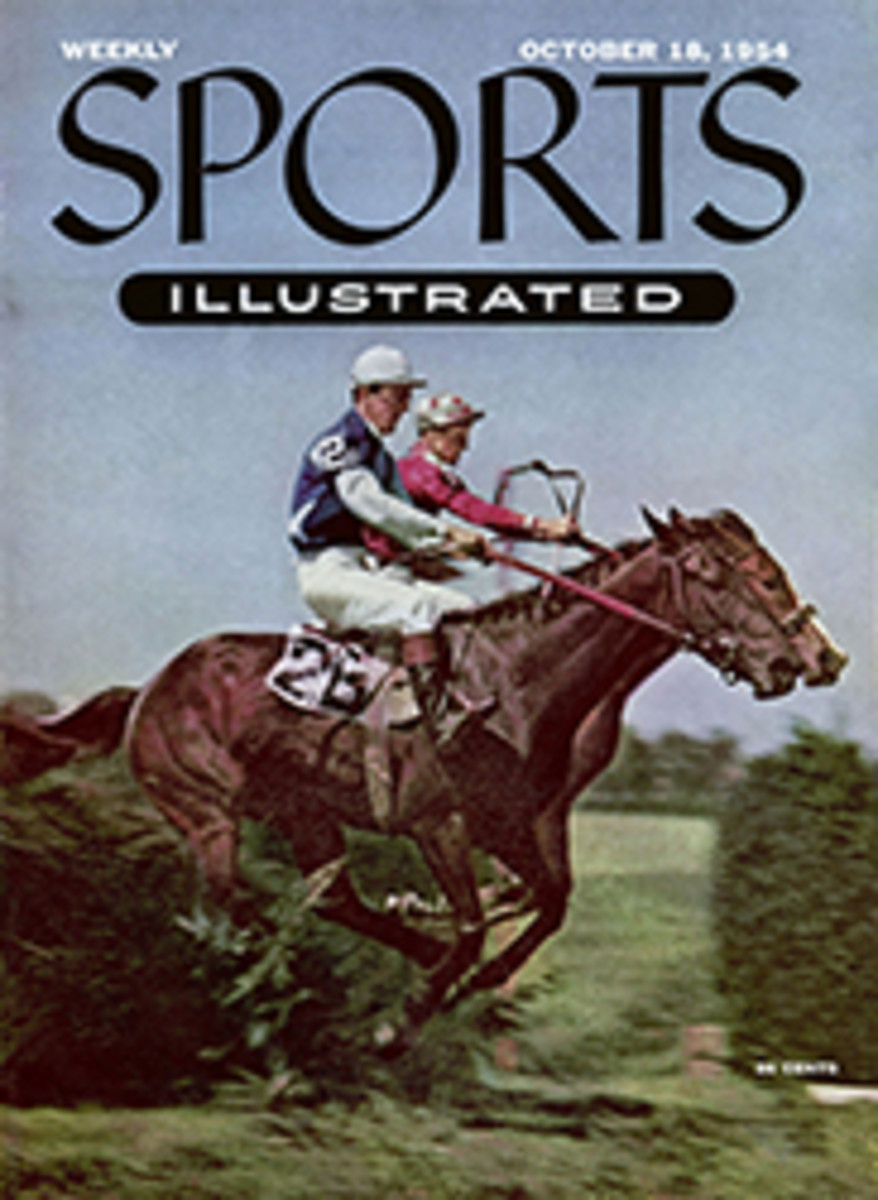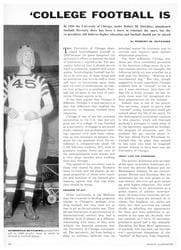
ONCE MORE—IT'S A SON OF NASRULLAH
The public has been slow to get excited about Nashua, possibly because he is not so dramatic as the gray Native Dancer, their last great love. But nothing succeeds like success and there is no greater thrill than to see a star born. And Nashua behaved like a star when, after getting the lead halfway down the Widener chute, he held on to withstand the threats of Royal Coinage on his left, and Summer Tan on his right. Tapped lightly by Eddie Arcaro, the colt cinched his victory by a good safe head, in a true run race if ever I saw one. Winning Futurities is no novelty to Master Eddie. This was his fourth.
Nashua, whose winnings now total $192,865, has certainly cinched the two-year-old title. His victories include the Juvenile, the Grand Union Hotel Stakes and the Hopeful, all of them mere aperitifs to the Futurity. For this race is a symbol and has withstood change and the challenge of larger purses offered elsewhere. When the Futurity is mentioned it is the Belmont Futurity that is meant. As in the case of Tallulah no further qualification is necessary.
The race was dreamed up by James G. K. Lawrence, secretary of the old Coney Island track at Sheepshead Bay. Having raced in England, the New Orleans-born Lawrence foresaw the importance of an all-encompassing race for two-year-olds in which owners could enter the unborn progeny of their mares for a then unheard of small initial fee. This did the trick, the idea caught on, and the race since its very inception has been the gauge of our young potential champs.
Its companion piece, the Lawrence Realization for three-year-olds has lost its luster. Even the Champagne which used to be the fall distance test for two-year-olds has been overshadowed by the new Garden State race with its enormous cash inducement. But the Futurity's prestige is bright, undiminished.
Although last Saturday's field was small—only seven colts started—there were four of top quality. Kentuckian Hal Price Headley summed it up when saddling his entry Georgian, "This is possibly the finest Futurity field ever. Certainly the very best in many years."
It is a racing cliché that Futurity winners do not go on to win the Kentucky Derby. But if ever a colt was bred to go the classic route it is Nashua. The late William Woodward's passion was classic breeding and the colt's dam is Segula, a daughter of Johnstown and a nine-time winner for Belair Stud. Nashua's ability to go a route will be judged if he runs in the mile-and-a-sixteenth Garden State, the world's richest race, October 30th at Camden.
The progeny of Nasrullah, sire of Nashua, are making news from England (Never Say Die won the Derby) to California (Blue Ruler took the Del Mar Futurity). First tip-off to American racegoers that there was something special about the sons of Nasrullah was the Irish colt Noor, imported by C. S. Howard, which accomplished the seemingly impossible by beating the great Citation four in a row in California early in 1950.
Nasrullah, a son of the unbeaten Italian horse Nearco, raced for the Aga Khan and was brought over here in 1951 by a syndicate to stand at Claiborne Farms in Paris, Kentucky. At the Keeneland sales last July, a Nasrullah colt brought $86,000—highest price ever paid for a yearling in this country.
Even people whose interest in breeding is academic follow the Nasrullah line. And it pays off, for a surprising number of his sons and daughters, too, win races. Last Saturday, in fact, the second race was taken by Cain Hoy's Flying Fury, just another Nasrullah colt.
That he is sire of the year is undisputed. He may well be the great sire of this decade.

